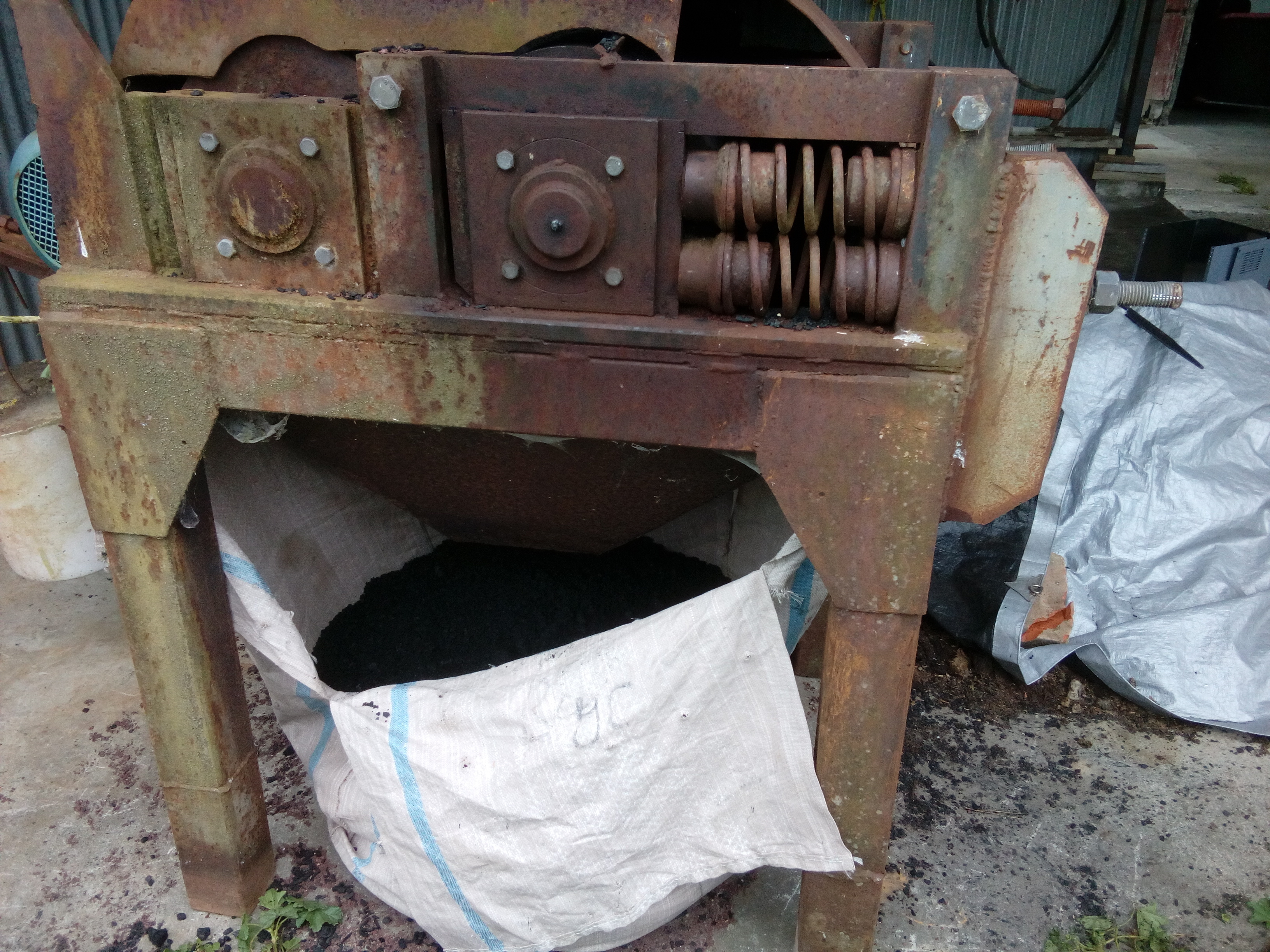Sure thing! Here is a "front" view of the beast:

And here is a clip of it at work:
Youtube link
You can see how much water is in the biochar as it clings to the rollers.
[edit] I will take some more photos next time I go up to crush a load. You can just see the edge of the motor frame on the left. It's a 5 HP 3-phase motor with a triple belted pulley transferring power to the closer of the two drums. There is a chain and sprocket assembly that drives the second drum from the first and you can see the big preloaded springs that allow that drum to move. This is great, because it means that a rock or chunk of partially charred wood does not ruin the day.
It was built to crush bottles at a recycling facility, then did a stint reducing volcanic scoria to sand-like consistency. After that it sat idle for a few years until the owner heard what I was doing. He had been a personal friend of Dr Peter Read, who is credited with coining the word "biochar" in 2005, and was eager to donate the machine with the knowledge that it would be working for a good cause.








